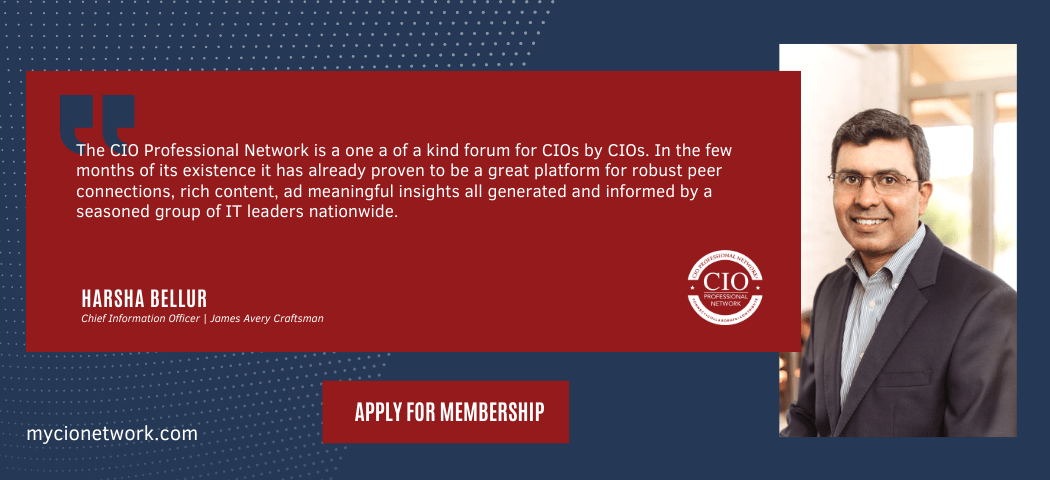The initial 100 days in a new leadership position offer a unique opportunity to establish a constructive tone, prioritize key objectives, and cultivate essential relationships. This crucial timeframe allows leaders to build momentum, influence the organizational culture positively, and prepare the foundation for enduring success.
Success during this period demands a balanced strategy that encompasses both immediate achievements and thoughtful, long-term planning, designed to address the organization’s specific challenges and capitalize on available opportunities. Emphasizing the need for alignment with stakeholder expectations and the importance of continuous, clear communication, this approach guides leaders in effectively navigating the complexities of the first 100 days, setting the stage for a fruitful tenure.
1. Setting the Stage
Crafting a Unified Plan
“By failing to prepare, you are preparing to fail.” – Benjamin Franklin, Founding Father of the United States
The transition into a new leadership role begins long before the official start date. Proactive leaders seize this prelude to engage with their stake-holders, aiming to jointly define the contours of success. The creation of a detailed strategic roadmap, complete with well-defined objectives, milestones to be achieved, and key performance indicators (KPIs) for assessment, is fundamental to this process. This collaborative planning phase is critical, ensuring a seamless alignment of visions between the leader and and the organization.
Such meticulous preparation not only sets a clear direction for the leader’s initial 100 days but also lays the groundwork for sustained advancement, reinforcing the shared commitment to achieving long-term strategic goals.
Optimizing Communication Channels
“The art of communication is the language of leadership.” – James Humes, former presidential speechwriter
Establishing robust channels of communication with all organizational stakeholders, ranging from team members and peers to external partners, is indispensable for effective leadership. Regular, structured communication practices serve as the cornerstone of this strategy, facilitating a culture of transparency and mutual understanding. By implementing a systematic approach to sharing updates, seeking feedback, and discussing strategic shifts, leaders ensure that every stakeholder is informed and engaged.
This deliberate and intentional step establishes an environment where strategic adjustments are not only anticipated but embraced, with comprehensive support across the organizational spectrum. It empowers leaders to maintain agility in decision-making processes, ensuring that the organization remains resilient and adaptive in the face of evolving challenges and opportunities.
2. Charting the Course
Embarking on an In-Depth Organizational Discovery
“If you want to understand how a lion hunts, don’t go to the zoo. Go to the jungle.” — Jim Stengel, author and business leader
The inaugural phase of leadership is marked by an intensive exploration of the organizational ecosystem. This critical period demands a comprehensive assessment that extends beyond surface-level observations to uncover the intricate workings of the organization’s culture, operational processes, team dynamics, and financial stability. Such an exhaustive examination is pivotal, serving as the linchpin for informed strategic planning.
By assimilating a holistic understanding of where the organization excels and where it confronts challenges, leaders can prioritize initiatives that promise the most significant impact. This initial deep dive not only illuminates pathways to enhance operational efficiencies and team cohesion but also highlights financial opportunities and risks, providing a clear-eyed view of the organization’s current reality.
Crafting and Communicating a Visionary Blueprint
“Leadership is the capacity to translate vision into reality.” – Warren Bennis, scholar and leadership expert
Armed with a nuanced understanding of the organization, leaders are uniquely positioned to craft a vision that resonates with both the aspirations of the company and the practicalities of its current state. This vision, while aspirational, must be anchored in realism, offering a compelling narrative that is both inspiring and attainable. The articulation of this vision involves translating abstract ambitions into concrete strategic objectives, defining the benchmarks for success that will guide the organization’s journey.
It is through this visionary blueprint that leaders rally their teams, aligning the collective efforts of the organization towards a shared future. This process of vision setting is not a solitary endeavor but a collaborative dialogue that invites input, fosters buy-in, and builds consensus, ensuring that the vision is embraced organization-wide as a common goal.
3. Establishing Influence
Cultivating Leadership Styles
“The greatest leader is not necessarily the one who does the greatest things. He is the one that gets the people to do the greatest things.” — Ronald Reagan, 40th President of the United States
Embracing a leadership style that harmonizes with and elevates the organizational culture is paramount. Whether adopting transformational leadership to inspire and innovate, servant leadership to empower and serve, or situational leadership to adapt and address specific challenges, the essence lies in cultivating an environment of trust.
Leaders must prioritize open communication, creating a space where feedback flows freely, ideas are shared without hesitation, and every team member feels valued and understood. This approach not only fosters trust but also drives the collective pursuit of organizational goals, ensuring that team members are not just heard but are genuinely motivated to contribute their best.
Building Key Relationships
“The most important single ingredient in the formula of success is knowing how to get along with people.” – Theodore Roosevelt, 26th President of the United States
The journey through the first 100 days and the path that follows is inherently collaborative. The art of relationship-building extends beyond mere interactions with direct reports to encompass peers across departments and key external stakeholders. This multidimensional networking involves a deep dive into understanding the unique challenges and ambitions of each constituent, aligning them with the broader organizational mission.
A leader’s ability to listen, empathize, and effectively communicate plays a critical role in knitting a fabric of allies and advocates within and beyond the organization. Such strategic alliances are not just supportive; they are instrumental in propelling forward the leader’s vision and facilitating the swift execution of strategic plans. By embedding themselves within this network of shared goals and mutual respect, leaders can significantly enhance their ability to navigate complexities, champion change, and achieve lasting success.
4. Achieving Milestones
Catalyzing Progress Through Tactical Victories
“I find that the harder I work, the more luck I seem to have.” – Thomas Jefferson, 3rd President of the United States
The initial phase of leadership is a critical time for demonstrating capability and effecting tangible change. The pursuit of quick wins—strategically selected initiatives that yield immediate, visible improvements—serves as a powerful mechanism for building momentum. Whether it’s refining a cumbersome process to enhance efficiency, elevating customer satisfaction through targeted service enhancements, or surpassing a key sales target, these early achievements signal the leader’s effectiveness and commitment to positive change.
Beyond their intrinsic value, these victories play a vital role in bolstering the leader’s credibility and uplifting team spirit, creating a wave of enthusiasm and engagement that permeates the organization.
Forging a Path to Enduring Success
“It is not the strongest of the species that survive, nor the most intelligent, but the one most responsive to change.” – Charles Darwin, Naturalist and Biologist
While the allure of immediate results is undeniable, visionary leaders recognize the paramount importance of balancing short-term achievements with the imperative of long-term strategic planning. The crafting of a sustainable growth strategy—a comprehensive plan that thoughtfully addresses the multifaceted challenges facing the organization while seizing opportunities for innovation and development—is essential.
This strategic framework, characterized by its adaptability, enables leaders to navigate the ever-shifting business terrain, ensuring that the organization remains resilient and poised for growth. It is through this deliberate planning that leaders can chart a course towards sustained success, embedding mechanisms for continuous improvement and strategic agility within the fabric of the organization.
5. Shaping the Future
Igniting the Spark of Creativity and Innovation
“Innovation distinguishes between a leader and a follower.” – Steve Jobs, Co-founder of Apple Inc.
At the heart of enduring organizational success lies a deep-seated culture of innovation, a milieu where creativity flourishes and experimentation is not just permitted but encouraged. The establishment of dedicated spaces for innovation, such as labs, think tanks, or even regular hackathon events, serves as a testament to the organization’s commitment to forward-thinking. These initiatives act as catalysts, sparking a wealth of fresh ideas and novel solutions that propel the organization into new frontiers of achievement.
By championing these endeavors, leaders not only drive the organization’s innovative capabilities but also signal a clear commitment to embracing change and fostering a dynamic environment where ingenuity is celebrated and rewarded.
Sculpting the Organizational Ethos
“Culture eats strategy for breakfast.” – Peter Drucker, management consultant, educator, and author
The influence of leadership extends far beyond strategic decisions and operational directives, it profoundly shapes the very essence of the organizational culture. Leaders, through their behaviors, priorities, and the values they champion, have the unique ability to mold an organizational culture that mirrors the collective aspirations and principles of its people. This entails fostering a culture that not only aligns with the organizational vision but creates a space where every member feels valued, understood, and motivated to contribute their best.
The cultivation of such an environment necessitates a deliberate and thoughtful approach, where high performance is pursued not at the expense of well-being but in harmony with it, ensuring that the drive for excellence is balanced with empathy, respect, and integrity.
6. Evaluating the First 100 Days
Compiling Insights and Achievements
“Reflecting on the past must only serve to better the future.” – Henry Ford, Founder of Ford Motor Company
The completion of the first 100 days marks a pivotal juncture for introspection and assessment. Crafting a comprehensive report that encapsulates the triumphs, trials, and insights garnered during this initial period is indispensable.
This detailed account goes beyond cataloging successes; it delves into the challenges faced, distills critical lessons, and critically evaluates the strategies employed. More importantly, it projects a vision for the future, delineating both ongoing projects and strategic initiatives on the horizon. Such a document serves not just as a record of past actions but as a beacon guiding the organization’s future course, embodying a commitment to continuous improvement and strategic agility.
Disseminating Findings and Fostering Dialogue
“Feedback is the breakfast of champions.” – Ken Blanchard, author and management expert
The strategic sharing of this reflective summary with both superiors and wider organizational stakeholders is a key step in consolidating the leader’s role and influence. This act of communication provides the opportunity to engage in a dialogue about the organization’s trajectory, to align on objectives, and to collectively refine the strategic path forward for the post 100 day period. It offers a platform to celebrate collective achievements, to openly address areas needing improvement, and to rally the organization around a unified vision for the future.
By fostering an environment where feedback is actively sought and valued, leaders not only reinforce a culture of accountability but also cultivate a sense of shared ownership over the organization’s destiny. This process not only secures widespread support for forthcoming initiatives but also solidifies the leader’s standing, showcasing their commitment to transparency, collaboration, and strategic foresight.
The Wrap
The foundations established during the initial 100 days are just the beginning. Effective leaders continuously assess and adapt their strategies, maintain open lines of communication, and foster an environment of continuous improvement. They remain forward-thinking, always anticipating changes in the business landscape and preparing the organization to meet future challenges head-on.
As leaders embark on this journey, it is essential to remember that the first 100 days are not just about immediate successes but about setting a sustainable course for the future. The true measure of success will be the long-term impact of the decisions made and the foundations established during this critical period. This approach, characterized by strategic foresight, adaptability, and a commitment to continuous growth, is what distinguishes truly transformative leaders.







